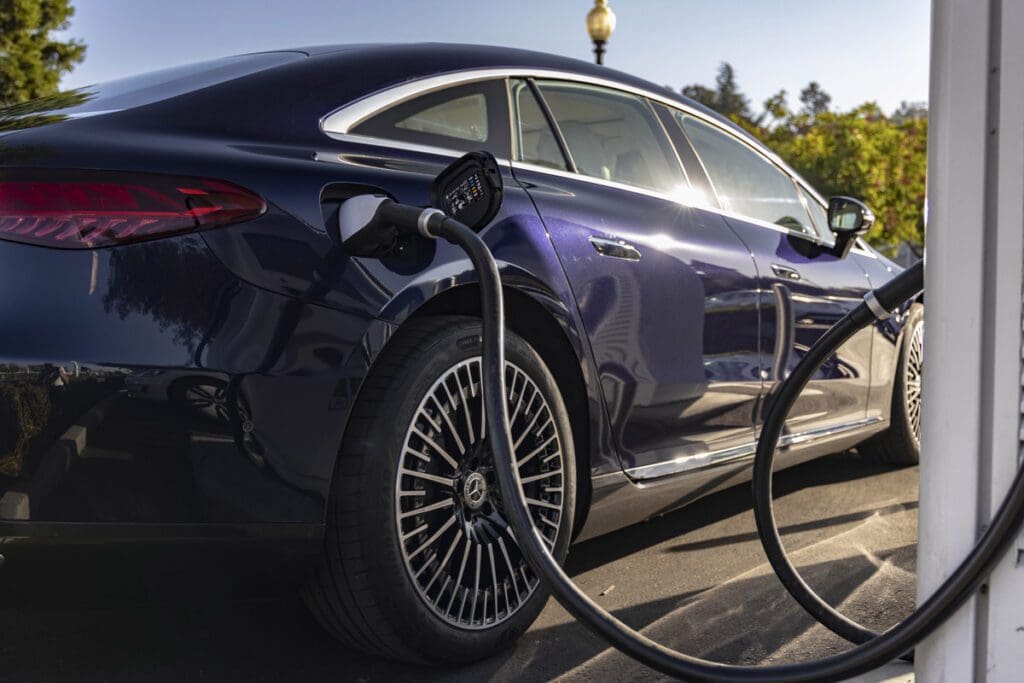“What’s in a reputation? That which we name a rose by some other title would odor as candy.” These phrases, spoken by Juliet in Shakespeare’s nice tragedy “Romeo and Juliet,” indicate that names are meaningless. However don’t inform a product supervisor that, particularly one within the automotive business. Automotive names observe developments in tradition and historical past. For instance, the mid-century Atomic Age gave us highly effective one-word American automotive nameplates that both hinted at area journey (Comet, Starfire, Galaxy, Mercury, Taurus) or glamor (Continental, Riviera, Monte Carlo, Eldorado, Monaco), whereas the Europeans remained extra prosaic, utilizing numbers that had extra of an inner which means than the rest (2002, 240D, 500, 401, 320iS).
Nonetheless, as soon as American automakers within the midst of the 1973 Arab Oil Embargo needed to shrink their vehicles en masse, a bevy of names—from Sedan de Ville to sure, even the Eldorado—started to look extra just like the names of Wi-Fi hotspots. Seemingly in a single day, the modern aerodynamic look of American automobiles was changed by a supposedly extra European boxy form. Regardless of this, sure nameplates—examples embody the Chevy Suburban (1935), the Honda Accord (1976), the Volkswagen Beetle (1938), and the Mercedes S-Class (1972)—have loved nice endurance.
This considerably explains why Mercedes-Benz has introduced a major change to the nomenclature it makes use of for its electrical automobiles, and if there’s something Mercedes has been with nomenclature, it’s persistently inconsistent.
The Stuttgart-based automaker will not use the “EQ” prefix for its EVs. The usage of the prefix was in direct opposition to the nomenclature coverage that Mercedes promulgated 10 years in the past, when it started to make use of lowercase letters to point the kind of a car’s powerplant, akin to “d” for diesel and “e” for electrical.

The “EQ” prefix had grow to be unwieldy lately, because it created confusion with inner combustion engine automobiles that used single-letter or two-letter prefixes adopted by a category designation. For instance, for the E-Class, or E-Klasse in German, there was each an EQE that was an E-Class EV sedan and an EQE SUV that was clearly not a sedan.
The truth that Mercedes‘s second quarter US gross sales report indicated that mixed gross sales of the EQS sedan and EQS SUV had been down by 52% within the first half of 2024 in comparison with the identical interval in 2023 didn’t make the clumsy naming schema any extra beloved.
Therefore the information of yet one more Mercedes nomenclature change.
Mercedes CEO Ola Källenius advised weekly UK vehicle journal Autocar that “there will probably be two S-Courses sooner or later—ICE and electrical.”
That answer neatly permits the Stuttgarters to eradicate the EQS title, which apparently didn’t take pleasure in the identical standing amongst luxurious automotive consumers that the S-Class did.
The 2 new S-Class automobiles, nevertheless, is not going to be based mostly on the identical platform. The EV variant of the S-Class will use the forthcoming MB.EA Massive platform, whereas the ICE variant of the S-Class will probably be based mostly on a developed model of the present MRA structure.
It’s necessary to notice that, whereas Mercedes-Benz had initially projected that EV gross sales would account for greater than 20% of its 2,043,800 world gross sales in 2023, the electrics solely achieved an 11% market share at greatest, regardless of a 73% general improve within the automaker’s complete EV gross sales from 2022.
Contemplating these gross sales figures, maybe the Stuttgarters ought to have used the time and power spent on remodeling the nomenclature to strategize the best way to provide lower-priced EVs that may beat the competitors from China.
The automaker had beforehand introduced a major change to its car nomenclature in 2014 in an effort to simplify its mannequin names. At the moment, Mercedes standardized on a system that constructed mannequin designations from mixtures of between one and three uppercase letters. Various kinds of energy had been to be indicated by a lowercase letter. Mercedes additionally retired the BlueTec model for diesels, reverting to utilizing an unadorned letter “D” as had been used previously, akin to on the 240D, albeit in lowercase. Hybrid automobiles had been to get an “h,” whereas electrical automobiles had been to obtain an “e” designation.
Previous to that, essentially the most vital change was in 1993, when the letters “C” and “E” grew to become prefixes for the corporate’s compact and mid-sized sedans.
Supply: Autocar



